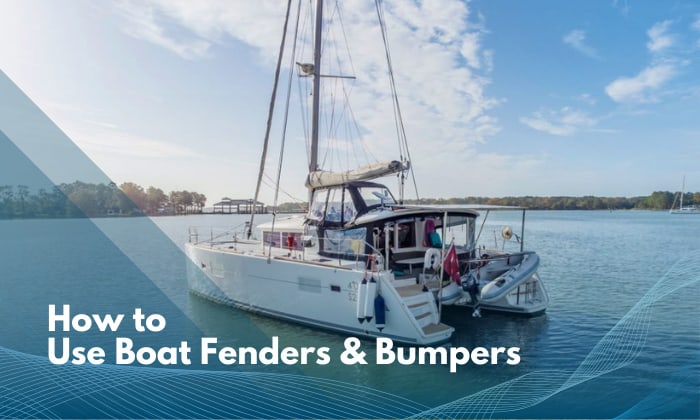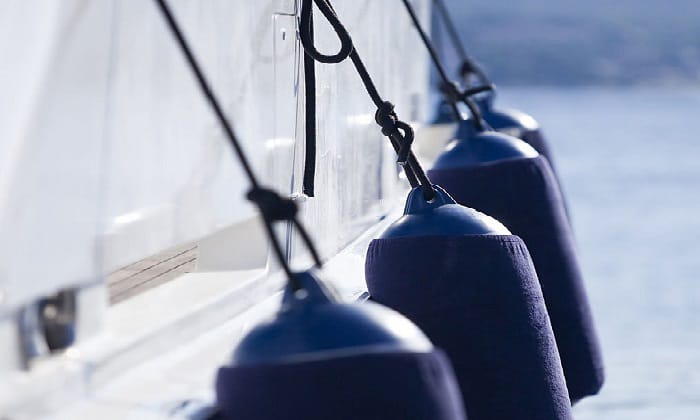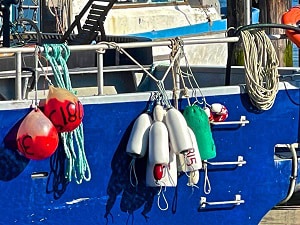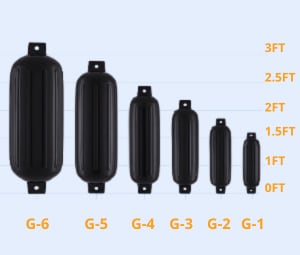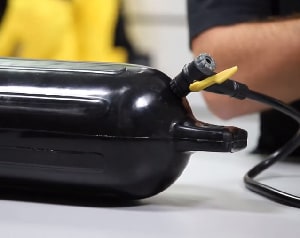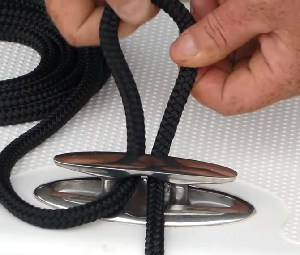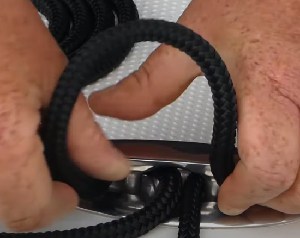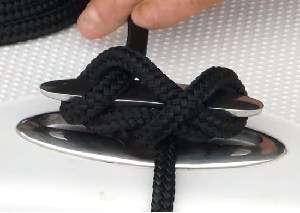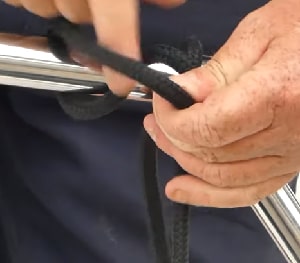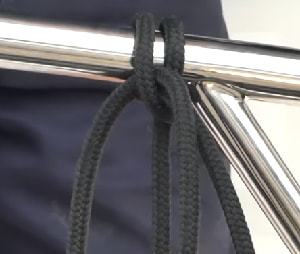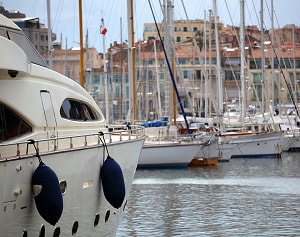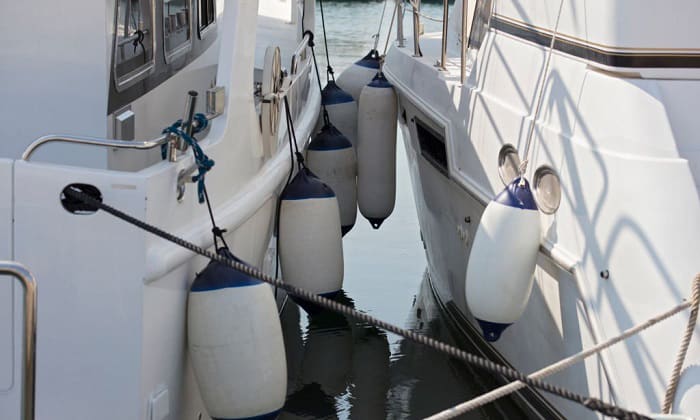For their ever-reliable protective capabilities, every boater loves fenders and bumpers. If you count yourself still among the uninitiated when it comes to using them, this guide’s for you.
I’ll teach you how to use boat fenders & bumpers, so you’ll have peace of mind that they’ll be able to perform optimally. Many people struggle with tying them, so I’ve also shared the techniques that have worked for me like clockwork for years – with a few bonus tips thrown in to ensure zero hitches.
Table of Contents
How to Use Boat Fenders and Bumpers
Plenty of guides I’ve seen only dealt with tying the correct knot for boat bumpers. However, it’s just as important to ensure that you’re using the right type and size as well as inflating, positioning, and storing them correctly. Let’s begin.
Step 1: Select suitable bumpers and fender type
Although fenders may seem all the same to you, there are actually several types that ultimately affect how they function and their expected longevity. To give you an idea, here’s a summary of the most common fender types.
- Inflatable fenders – the most popular fender available to boaters, these usually come with eyelets on either side. Such a setup allows you to hang them horizontally or vertically should the need arise.
- Bumper buoys – these are a type of inflatable bumper that immediately stands out among other fenders due to their ball shape. They’re made of PVC plastic with gel coats, which aid in boosting durability.
- Low freeboard fenders – these are usually designed to hang high on the hull, protecting the gunwale and rub rail. Their inverted L shape aids in keeping them in place.
- Modular fenders – if you don’t like having to inflate and deflate your fenders, you can use modular ones instead. They’re typically foam-filled and come with adjustable ties and Velcro for easy setup.
- DIY boat fenders – anything homemade falls under this category. Folks have made workable fenders with just a flotation noodle and some cable ties. Don’t expect them to last, though.
Step 2: Choose the most suitable bumpers and fender size.
You can’t ever use any tool to the fullest if you end up with the wrong one from the get-go. When it comes to rigging boat fenders, you need to make sure you’re working with the right size.
Larger fenders have the inherent advantage of providing more cushion and lasting longer. If you want to stay safe and don’t want to dive into too many technicalities and calculations, then just aim for bigger sizes.
As a general rule of thumb, though, you’d want to install boat fenders following the ratio of 1-inch of fender diameter for every 5 feet of boat length. That directly answers another popular question, “What size boat fenders do I need?”
- Let’s say you have a 20 ft pontoon boat. That means you’ll need at least a fender with a 4-inch diameter for it.
- By the same rule, a 30-footer will need at least a 6-inch fender.
1. Position the bumpers and fenders correctly.
Correct fender placement can make all the difference in the world when minimizing the amount of damage your vessel is subjected to.
Every time I set up boat fenders anew, I always anticipate how I dock my vessel. Logically, you want to put them on the specific parts and portions that will make contact when docking. For most vessels, it’s along the sides of the hull, facing the dock.
A few boaters prefer to dock with their bow (or even transom at times), so naturally, you need to put more in either of those sections. It’s really all about being mindful of every possible contact point.
Also, every time you tie a rope to a boat fender and install it, be mindful of its height relative to that of the dock, ideally during low tide and high tide in your area. Adjust accordingly.
Step 3: Apply the correct pressure when inflating.
I know not all boat fenders are inflatable. If you’re using horizontal boat fenders that aren’t inflatable, then you can skip this step.
The best approach to this is to learn what inflation diameter the fender manufacturer specifically recommends. Most kits don’t include a pump, but in most cases, you can inflate it with just a standard ball pump or tire pump.
Step 4: Ways to tie boat fenders & bumpers
Tying to Cleats
The Cleat Hitch is a solid boat fender knot, so I highly recommend you do it if you intend to tie your fenders to them.
1. Begin by pulling any portion of the rope, besides the ends, through the center of the pop-up cleat.
2. Once your fender reaches the right height, you can then loop the rope on either side of the cleat.
3. Pull, then put two small hitches through the cleat’s horns.
Tying to Railings and Stanchions
The Slipping Clove Hitch knot works well for those who want to undo knots quickly.
1. Tie the rope over the railing, then loop behind it.
2. Go over it again, then pull a portion of the rope (near the end but not its end), so you can easily undo it for stowing or making adjustments.
Step 5: Store and maintain them properly.
It’s general practice to remove the fenders when they’re not needed. Simply untie them and place them in the correct storage compartment. If your vessel doesn’t have one, you can install fender racks and holders on the vessel’s rails.
As for maintenance, keeping them clean will already go a long way. You can use a mild dishwashing soap like Dawn to remove all stains. Wash them well, then wait to dry.
Afterward, spray them with a plastic-friendly protectant like 303 Aerospace.
Other tips for using boat fenders & bumpers
- A boat should have a minimum of three fenders, one of which covers at least 10 feet of waterline.
- You have other factors to worry about besides hitting the dock. You also need to account for collisions that may happen because of drifting. This is why you should aim to protect both sides of your boat with fenders, if possible.
- Horizontal boat dock bumpers may benefit better from figure-eight knots to prevent them from slipping.
- Used boat fenders, especially the bigger ones, last a lifetime if you take care of them.
- There’s nothing wrong with attaching boat fenders to a dock. However, you should be extra leery of doing this in public docks where you aren’t sure someone might steal them.
As such, make it as tough as possible for the thief to get it. You can tie it using the constrictor knot, which is one of the most difficult to untie.
When should I use my boat fenders?
I’ve been approached by beginner boaters with the question, “When should you put fenders on your boat?” I often answer them briefly: every time it’s in the water and not in storage.
Whether the vessel is docked, in the process of docking, cruising, drifting, etc., it will always be subject to the natural and artificial elements inherent in nautical environments.
Best Locations to Place Boat Fenders and Bumpers
- Anywhere along the boat’s sides, bow, stern, near the waterline, and points of contact when docking will do. Feel free to adjust based on your boat’s design as well as the height and position of any object, structure, or debris that you’re protecting your vessel against.
- Oftentimes, it’s actually better to tie a fender to a cleat midship or at the bottom part of the stanchion because some setups end up damaging the stanchion.
- For those who don’t want to have bumpers and fenders hanging on a pontoon boat, a catamaran, or any vessel you may have, tying on the dock is a good alternative. In such cases, though, it would be better to use Hull Hugr dock bumpers altogether.
Conclusion
Here’s a summary of how to use boat fenders & bumpers:
- Select the right size and type based on what’s best for your vessel.
- Learn how to inflate it and optimal placement based on your specific conditions and setup.
- Remember the best ways to tie and adjust them.
- You can also tie them to a piling on the dock but always weigh your risks first.
- Take the time to store and maintain them.
We hope that this has helped you figure out how to utilize these protective cushions for boats. If you still have any questions, feel free to leave a comment to let us know.

“My intention from the first day establishing Boating Basics Online is to provide as much help as possible for boaters who want to experience a first safe and convenient trip. So feel free to join us and share your beautiful journeys to the sea!”

